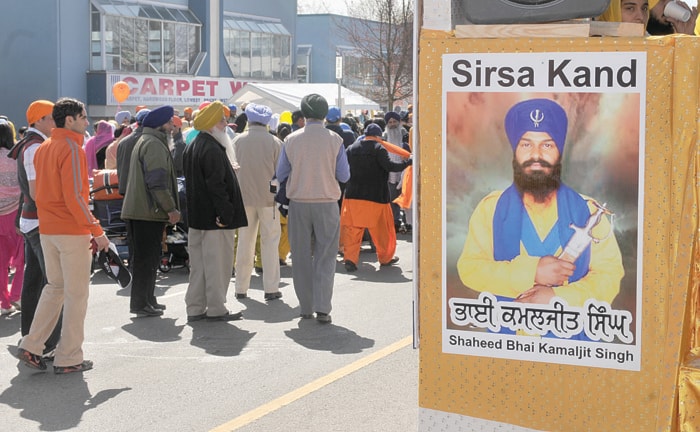The largest Vaisakhi parade
in the world outside of India has not been without its share of controversy.
Vaisakhi is a month-long celebration of the harvest in Punjab. But the parade – which takes place April 21 in Surrey – also celebrates the creation of the Sikh Khalsa, which was established in 1699 to fight discrimination, promote equality and uphold the values of truth.
Politicians expressed their disappointment in 2007 and 2008, when the image of Talwinder Singh Parmar was included on the Float of Martyrs.
Parmar was the alleged mastermind of the Air India bombing that killed 329 passengers in 1985. Parmar was killed by police in India, and never faced trial for the bombing here.
Parmar was also founder of Babbar Khalsa International, which has been declared a terrorist organization by India, the U.S., Britain and Canada.
Several politicians refused to attend Vaisakhi those years.
In 2009, controversial images were removed from the float, but the following year, several of the publicly problematic martyrs were back on the float, raising the ire of Surrey Mayor Dianne Watts and provincial politicians.
Among the images featured were two bodyguards who assassinated Indian Prime Minister Indira Gandhi.
Watts was incensed.
“We’ve been working with the organizers for a year, everything has gone along smoothly, we had no issues last year, and here we are a day before the event and this nonsense starts,” Watts told The Leader in 2010.
She stressed that the Surrey Vaisakhi Parade is meant to be a community event, not a political one.
In 2011, the Float of Martyrs was clear of any controversial images.
Moninder Singh, spokesman for the Vaisakhi Parade, formally called the Khalsa Day Parade, said there were some growing pains, but event organizers have moved past the controversy.
The images had been part of the floats all along until it was raised as an issue, Singh said in an interview from Toronto.
“There’s no violence, the parades are always peaceful, the protests are peaceful,” he said.
He said the images on the float were of people who had to use violence “defensively” to make their call for a separate Sikh state.
“My involvement in the gurdwara (temple) has been mainly after the controversy, and then getting it to the point of why does this controversy have to exist?” Singh said, adding he has had a role with the parade planning over the last two to three years.
“The floats still have self-determination (separatist) messages,” Singh said. But “we have restricted the images down to only images we feel we can explain to our wider community, and also to the broader Canadian community.”
